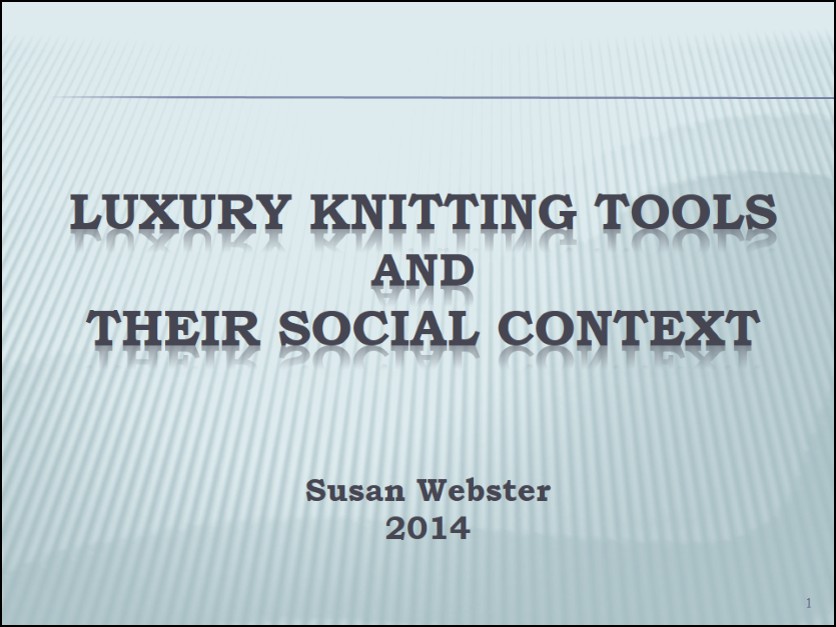Before patterns were written down, needle size did not matter so much, and trainee knitters learned to gauge by eye and from swatches and experience what their needles would produce .
In the 4th quarter of the 18th century, very fine needles and fine knitting of reticules, cuffs, gloves, etc., became fashionable.
- Reflect the taste for the delicate fabrics being shipped in from India
- Fine needlework could be more easily taken with a lady on social visits and could be used to display the needlewoman’s skill and dexterity, and her delicate, white hands
The first printed patterns for mass use appeared in the UK in the 1830’s-1840’s – a bit earlier in Germany. Mme Lambert claimed in her books that she had invented the needle gauge, which she called the Standard Filiere to help knitters match their needle size to the patterns.
The three larger gauges seem to have been cut or stamped from the same last. Mme Lambert’s ivory gauge dates from 1842 and is pretty rare (CC 39). There are two versions of the Standard Filiere, only one shown here.
The Leahman gauge – CC 1219 – and the Wilks gauge are extremely rare – CC 2263. I have only seen these in the photo. There is one other such gauge from the same last – inscribed for Boultons, the early firm of needlemakers (presumably knitting needles as well as sewing needles). My bidder at Bleasdales auctions knew this was my number one pick for the entire auction and bid above the limit I set. Finally she was too frightened to bid higher, and a jeweler bought this specimen for his mother – grrrr.
The smaller ivory gauge (CC 37) in the upper right comes from the USA and is undated so far.
The bell gauge (cc 871) – a look-alike to hundreds of thousands made of chrome, brass or base metal – is sterling, made by Frederick Henry Weare, a Soho jeweller registered from 1880. It is quite plain and boring.


























